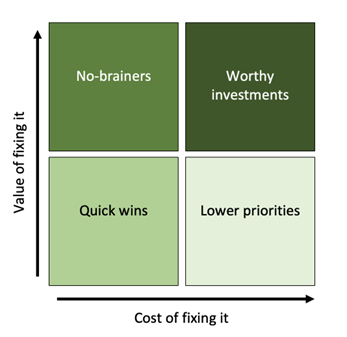What Is Technical Debt, and How Do You Avoid It?
Best Practices for Strategic IT Spend in a Tough Economy
The financial services industry is at an inflection point. Back in January, most financial institutions were planning to boost their tech spending by at least 10% in 2023. But after the collapse of Silicon Valley Bank in March, many banking leaders are reckoning with a new reality by putting their tech spending on hold.
That’s an understandable reaction to the uncertainty of the current economic landscape, but it may be a self-defeating strategy in the long run.
The simple fact is this: if you put off investing in new or optimized technology, you stand a chance of racking up too much technical debt. Here’s what that means — and how to avoid it.
Why Technical Debt Matters Now More Than Ever
Technical debt is the result of prioritizing quick fixes over full-scale solutions, leading almost inevitably to long-term pain. Like any other kind of debt, technical debt accrues a certain kind of interest: the longer the delay, the greater the penalty. That’s because, when it comes to tech, the cost of catching up almost always exceeds the cost of keeping up.
Let’s say you delay a critical infrastructure refresh in response to a volatile stock market. This may make superficial sense, at least in the short term. But then the technical debt starts piling up. Before you know it, even more equipment needs to be replaced, and the equipment you should have replaced last year isn’t just out of date — it’s downright obsolete. The cost of replacing it is even higher than it would have been before.
Another consideration is Cybersecurity. In today’s landscape, keeping up on the latest Cybersecurity measures is imperative since you can be sure that an unfavorable economic environment will not dissuade hackers for devising new and ingenious methods of breaching your defenses.
In each of the above examples, you lose productivity as you scramble to catch up. And worst of all, you start running into potential security and compliance issues while you’re busy solving yesterday’s problems and scrambling to deal with infrastructure outages and security breaches.
The Higher the Value, the Greater the Debt
One way to prioritize your IT investments is to think about them in terms of cost versus value. Consider this graphic:

Some IT upgrades deliver high value at a relatively low cost. Those are no-brainers. But the worthiest investments land in the upper-right quadrant, delivering a great deal of value at a significant cost.
These fixes are most likely to be ignored or delayed during a time of economic uncertainty, because the price tag simply seems too high. Unfortunately, these are the same fixes that, if ignored, accrue the most technical debt — and may result in the greatest potential damage to your firm.
If You Want to Avoid Technical Debt, We’re Here to Help
By leaning on a trusted partner like Fairdinkum Consulting, you can find your way forward in a tough climate. You can identify which fixes or updates require the most urgent attention. And you can plan your IT refreshes both systematically and strategically to keep your technical debt — and your regulatory risk — to an absolute minimum.
By working hand-in-hand with our team to keep your infrastructure in good standing, you’ll be better-equipped to pivot in response to whatever’s going on in the macro environment. That kind of agility will be critical to future-proofing your organization so you can face the future with confidence.